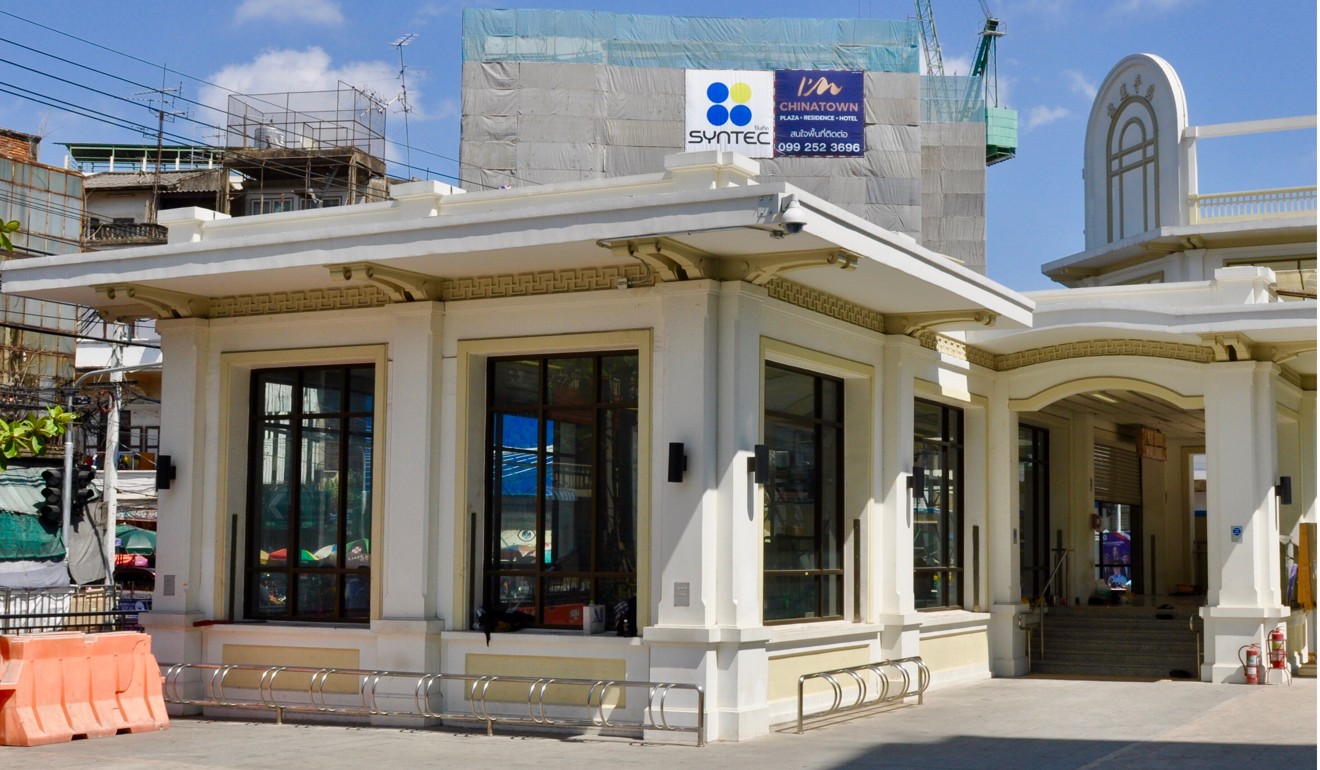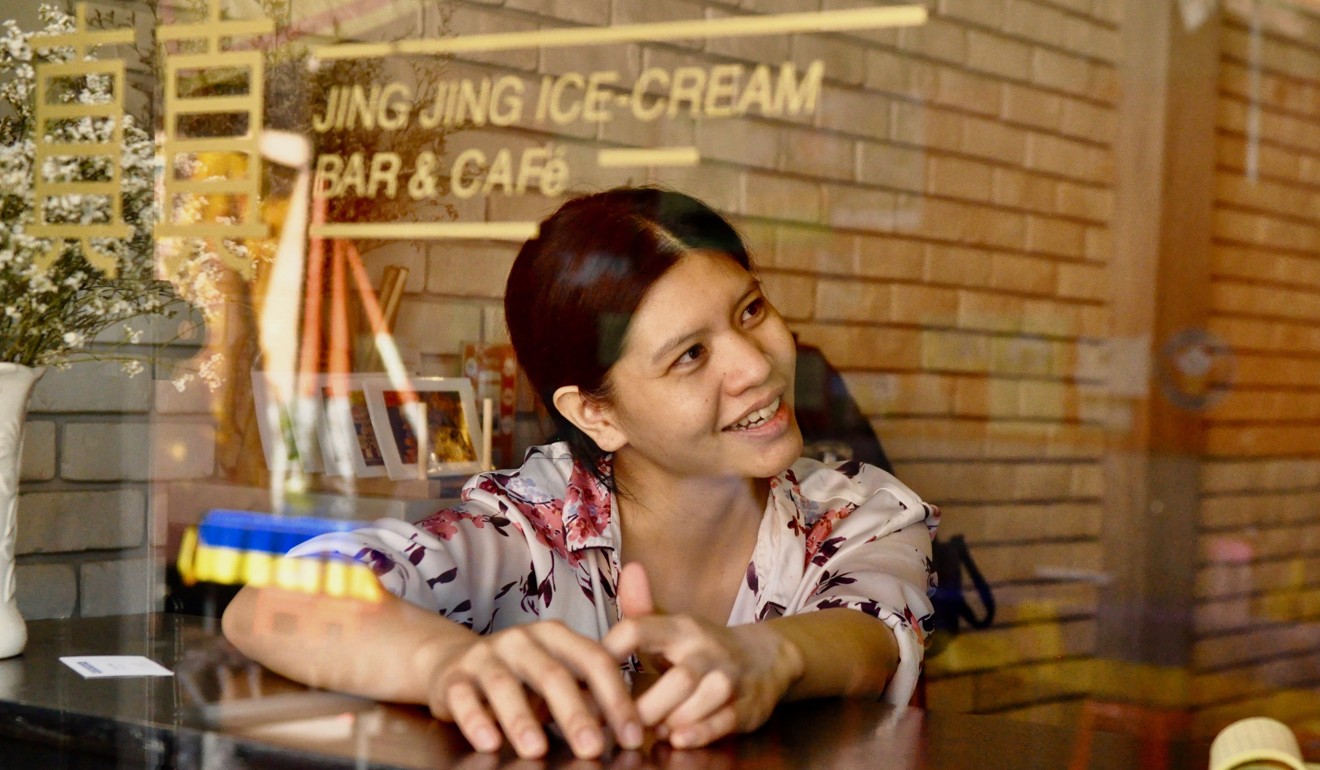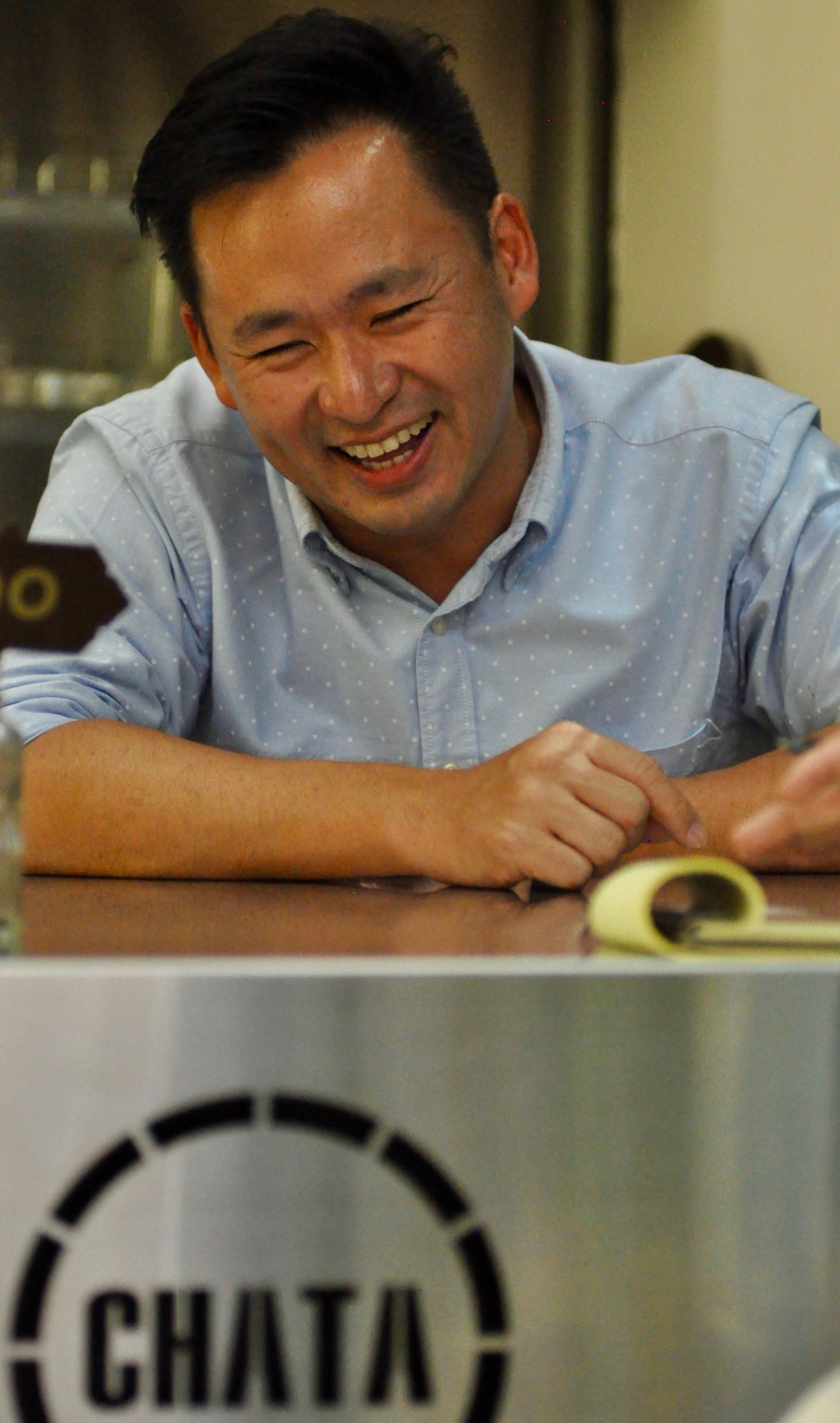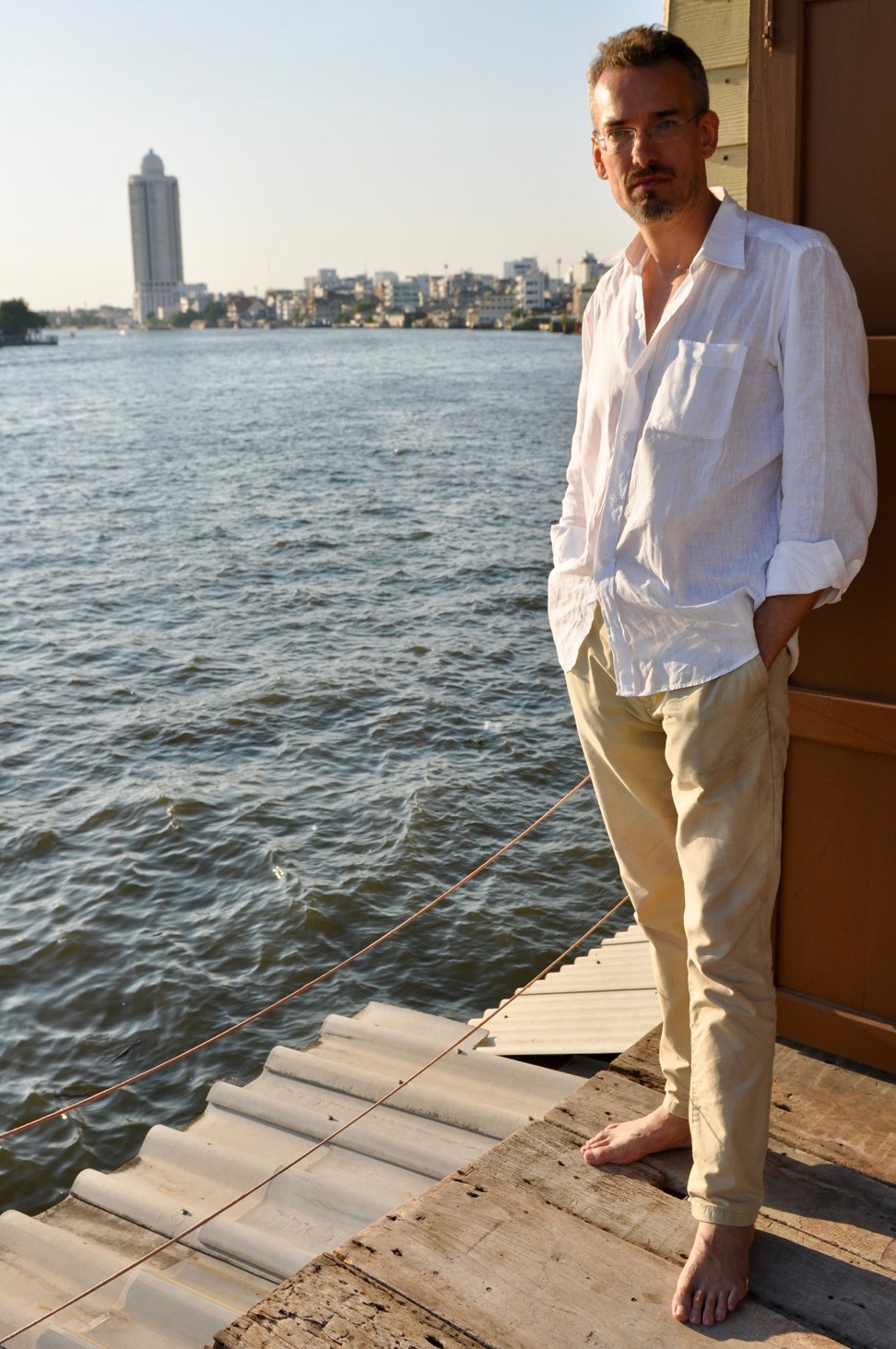
Four great places to eat in Bangkok’s Chinatown when its subway station opens
- With little room for cars, Chinatown expects a boost in visitors when its subway station opens
- From home-made ice cream to coffee to Hong Kong craft beer, these four outlets are raising the bar in Bangkok

When the Wat Mangkon (Dragon Temple) MRT station finally opens in September this year, the back alleys of Bangkok’s Chinatown will be easily accessible on foot, which has always been the best means of transport in this most congested neighbourhood in the Thai capital.
If it opens on schedule, that is. The station, one of several stops on an extension of the Blue Line that opened in 2004 and which now ends at the Hua Lamphong Railway Station on the eastern outskirts of Chinatown, has been under construction for several years. It was originally expected to open in 2016.
“They have been saying it will open ‘this year’ for the past three years,” says Suksan Aueareechon, managing director of Baan 2459/Chata, a boutique hotel and coffee shop that opened in Chinatown in August 2017.
The history of Chinatown is intimately interwoven with the history of Bangkok. The city was founded in 1782 by general Chao Phraya Chakri (Rama I – the first of the Chakri dynasty) who moved the capital across the Chao Phraya River from Thonburi (the site of the capital of King Taksin, who ruled from 1767 to 1782) to Rattanakosin island, home to the Grand Palace, Wat Phra Kaew (Emerald Buddha) and Sanam Luang (Royal Grounds).

In the relocation process, Rama I displaced thousands of Chinese immigrants and merchants who had made their homes on the riverbank, but provided them with a new settlement in Sampheng – the original name of Chinatown, derived from a lane that cut through the then swampy wilderness just east of Rattanakosin.
Rama I, like King Taksin before him, was keen to populate his new capital with industrious workers, so he pursued a liberal immigration policy, especially towards Chinese. Some 3.5 million arrived in Bangkok between 1882 and 1955, fleeing hunger and civil war at home.
During that period, Sampheng became the commercial heart of the capital, boasting its main river port, and evolved into the wholesale and retail hub of the emerging nation.
“It is one of the oldest, largest and most prosperous of overseas Chinese outposts,” writes Edward Van Roy in his still definitive history Sampheng – Bangkok’s Chinatown Inside Out. “It is among the most successful in having adapted to the host culture while protecting and preserving its own ethnic integrity. It is today the most ‘authentic’ Chinatown.”
The authenticity extends to the cuisine.

Sampheng boasts the best of Bangkok’s street food, offering a variety of mostly Chiu Chow/Hokkien/Hainan staples such as khao maan gai (chicken and rice), guay jap (pork intestines and rolled noodles) and kuey teow laut (large steamed spring roll with sweet sauce and spring onions).
Night time venues such as the duelling Red and Green seafood stalls on the mouth of Soi Texas have been drawing crowds for four decades.
The subway will bring all these delights within easier reach. There is little parking space in Sampheng’s alleyways (which explains why most of the original ethnic Chinese residents have moved to the suburbs and only man their shops in the daytime) and taxis are often reluctant to take you there.
Four must-eat places in Chinatown
Jing Jing Ice Cream Bar & Cafe
Opened in July 2017 by Chutinat Thasananuphan, Jing Jing offers arguably the best home-made ice cream in Chinatown. “In fact, I think mine is the only ice cream shop in Chinatown,” Chutinat says.
Chutinat, who was born in Sampheng and continues to live there with her family, started selling home-made ice cream outside her mother’s women’s accessories store about four years ago after taking a short course in ice cream making. She has developed interesting flavours such as passion fruit yogurt, mango sorbet, vodka Yakult jelly, white Russian, and gin and tonic.

In July 2017 Chutinat rented her current location in a renovated shop house, selling ice cream and fresh coffee. “Two years ago you didn’t have any coffee shops in Chinatown, except for one Starbucks, but now there are about 10 new coffee shops in Sampheng, all opened at the same time and mostly by younger generation people like me.”
Baan 2459/Chata
Baan 2459 Chata Specialty Coffee, which opened in August 2017, was an afterthought. “The coffee shop was an accident,” says owner Suksan Aueareechon.

Suksan rented out the Baan 2459 (House 1916) building in 2008 as a warehouse for his shoe business.
But he fell in love with the old building, which was at one time a “tea house” (house of prostitution) and persuaded the owner to let him transform it into a boutique hotel. The renovations started in February 2017 and were finished six months later.
“I gave myself a renovation budget of five million baht (US$157,000), but after that was spent I stopped counting,” Suksan says. “We opened the hotel and the coffee shop at the same time.”
The coffee shop is behind the hotel in a space that used to be a storeroom, which had an authentic retro wall. “A friend of mine told me, ‘If you want to open a coffee shop just make sure you have a nice wall.’ So I said, ‘I have a nice wall already.’ And I’m a coffee addict myself.”
The coffee shop features blends from around the world including Thailand and its neighbours Laos and Vietnam. Suksan opened a small bakery and restaurant, specialising in fusion Thai-Western desserts and rice dishes.

Baan Rim Nam
Sampheng is a big area, covering more than two square kilometres and several districts. The Talat Noi district, on the southeast edge of Sampheng, will not benefit much from the new station as it is too far (and too confusing) a hike to get there.
This hasn’t daunted Austrian entrepreneur Florian Gypser, who with his Thai wife Goy Siwaporn, started Bangkok’s first “private dining” experience in their flat on the 15th floor of an apartment building overlooking the Chao Phraya River in Talat Noi.
Nang Gin Kui (Sit Eat Talk), which opened in 2013, has been ranked the top spot among Bangkok restaurants by TripAdvisor and recently received a rave review in the New York Times. After six years of sitting, eating and talking, Gypser is expanding, just around the corner to a rice warehouse that he and the owners have transformed into a riverside restaurant/bar.
The propertysits right on the bank of the Chao Phraya River (hence the name Baan Rim Nam or “House on the Water”), down some narrow back alleys that are only accessible by motorcycle, bicycle or foot.
“The reason we got this place is it is not accessible by car,” Gypser says. “If it was accessible by car the owners would have lived in it for decades.”
Instead, aware of the success of Nang Gin Kui, the land owners approached the couple about two years ago to help them renovate and manage a restaurant at the site.
Baan Rim Nam, which had its soft opening about five months ago, is open for business from Friday toSunday, with Goy preparing a mix of Thai dishes and Western fare – putting their organic vegetable garden to good use.
Cocktails are served at the bar. “If you want beer you can buy it from my neighbour’s shop,” Gypser, an architect by training, says. “I didn’t want the restaurant to take business away from them. I see myself as a district manager for the area.”

Rabbit Hill
Akarawat Hengviriyapanichis a real Sampheng boy, born and raised in Chinatown. His family business is the wholesaling of key ingredients for Chinese and Japanese restaurants, such as abalone and fish maw, a business that takes him frequently to Hong Kong, Singapore and Japan.
On one of his many trips to Hong Kong he fell in love with Moonzen craft beer, a Hong Kong brand. The love affair led to the opening of Rabbit Hill bar and restaurant in September 2017. Rabbit Hill is a one- minute walk from Wat Mangkon Station.
“I decided to import Moonzen craft beer, but I didn’t want to go around town begging people to buy it, so I opened a bar myself to have an outlet,” Akarawat says. Initially, his establishment stuck to beer and spirits, but last year it branched out into food, primarily to help keep the customers drinking.
The menu includes old Chinese favourites, such as braised abalone with rice, drunken chicken and fish maw soup. “My menu is from my childhood. That’s how my parents fed me,” says Akarawat, whose father is Thai-Chinese and whose mother is Taiwanese.
A mural of Akarawat’s wife, promoting Moonzen craft beer from Hong Kong, is one of the main decorations in the bar.
Jing Jing Ice Cream Bar & Cafe (closed Tuesday)
154 Soi Charoenkrung 14, Chinatown, Bangkok, tel: +66 81 974 1929
Baan 2459/Chata Specialty Coffee (closed Monday)
98 Phat Sai Road, Chinatown, tel: +66 82 393 2459
Baan Rim Nam (open Friday, Saturday & Sunday)
378 Soi Wanit, Talat Noi, Chinatown, tel: +66 85 904 6996
Rabbit Hill Bar (open at 5pm)
1 Santiphap Road, Chinatown, tel: +66 92 646 6636